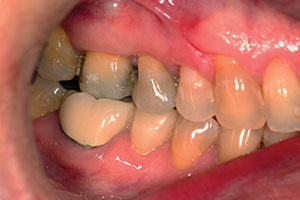Restorative
Glass Ionomers in Modern Clincial Practice
INTRODUCTION Much has changed in restorative dental materials since the introduction of the 2...
Restorative
Biocompatible Quadrant Dentistry for Overall Health
INTRODUCTION Dentistry’s tectonic plates are shifting. New discoveries in science and innovation are redirecting...
Restorative
An Improved Glass Ionomer Restorative System: Stress-Bearing Class I and II Indications
INTRODUCTION Glass ionomer cements (GICs) were first introduced in the 1970s.1 Currently, they are...
Restorative
The Seven Deadly Sins of Traditional Class II Restorations
INTRODUCTION The Evolution of Class II Composite Restorations When we first started placing posterior...
Restorative
Laser Troughing to Improve Scanning and Impressions
INTRODUCTION Fixed restorative dentistry success is dependent on the exquisite fit of restorations. When...
Restorative
Modern Posterior Composite Placement: An Innovative Single-Increment Technique
INTRODUCTION With the increasing demand for aesthetic restorations and development of adhesive techniques, composite...
Minimally Invasive Dentistry
Treating Post-Orthodontic White Spots: A Conservative Resin Infiltration Technique
INTRODUCTION White spot lesions are often the result of demineralization (the dissolution of enamel)...
Restorative
Anterior Fiber-Reinforced Fixed Partial Dentures Revisited
INTRODUCTION Several techniques have been reported on in the literature related to the treatment...
Restorative
Replacement of a Failing Composite Restoration: Pairing a Self-Etch Adhesive and Nanocomposite
Direct resin restorations are the most frequently performed operative treatment in the dental practice...
Restorative
Minimally Invasive Preps for Thin Porcelain Veneers
By using minimally invasive techniques, clinicians can now give their patients the smile enhancements...
















